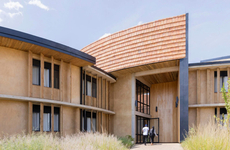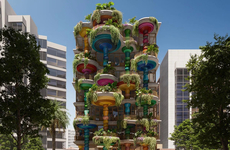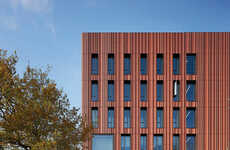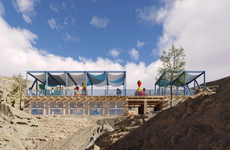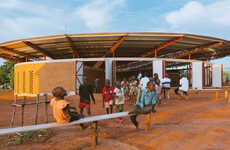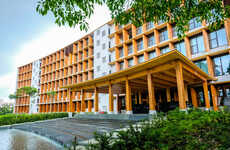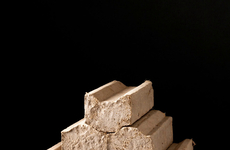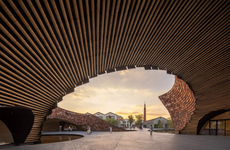
Burkina Institute of Technology is Made From Local Clay
Elena Rahman — June 30, 2021 — Eco
References: kerearchitecture & dezeen
The Burkina Institute of Technology was constructed by Burkinabe architect Diébédo Francis Kéré's studio. The university is located in Burkina Faso, western Africa. Its walls are made from locally sourced clay to decrease construction waste and import pollution.
The building is officially part of Lycée Schorge Secondary School's campus in Koudougou and intends to offer students an opportunity to continue their education post-secondary in a local setting. The 2,100-square-meter school uses screens of eucalyptus wood to blend into its clay ground surroundings. Within the building is a series of modules that make up classrooms, lecture halls, and auxiliary spaces. To facilitate airflow, the modules are staggered in an optimal formation. In addition, classrooms are arranged around a rectangular courtyard.
Image Credit: Dezeen
The building is officially part of Lycée Schorge Secondary School's campus in Koudougou and intends to offer students an opportunity to continue their education post-secondary in a local setting. The 2,100-square-meter school uses screens of eucalyptus wood to blend into its clay ground surroundings. Within the building is a series of modules that make up classrooms, lecture halls, and auxiliary spaces. To facilitate airflow, the modules are staggered in an optimal formation. In addition, classrooms are arranged around a rectangular courtyard.
Image Credit: Dezeen
Trend Themes
1. Clay-centered Architecture - Opportunity for architects to explore the use of locally sourced clay in the design and construction of buildings, potentially reducing construction waste and import pollution.
2. Sustainability in Education - Opportunity for educational institutions to prioritize sustainability in the design of their campuses and facilities, integrating eco-friendly materials and practices.
3. Innovative Classroom Design - Opportunity for architects and educators to experiment with modular and flexible classroom layouts, incorporating features such as courtyards and optimal airflow for improved student experiences.
Industry Implications
1. Architecture - Opportunity for architecture firms to prioritize sustainability and eco-friendly practices in their designs, potentially leading to innovative and cost-effective construction solutions.
2. Education - Opportunity for educational institutions to prioritize sustainability in their campus design and construction, potentially leading to improved student experiences and reduced environmental impact.
3. Construction - Opportunity for construction companies to explore and implement innovative and sustainable methods and materials in their building practices, potentially reducing environmental impact and cost while improving efficiency.
3.5
Score
Popularity
Activity
Freshness

